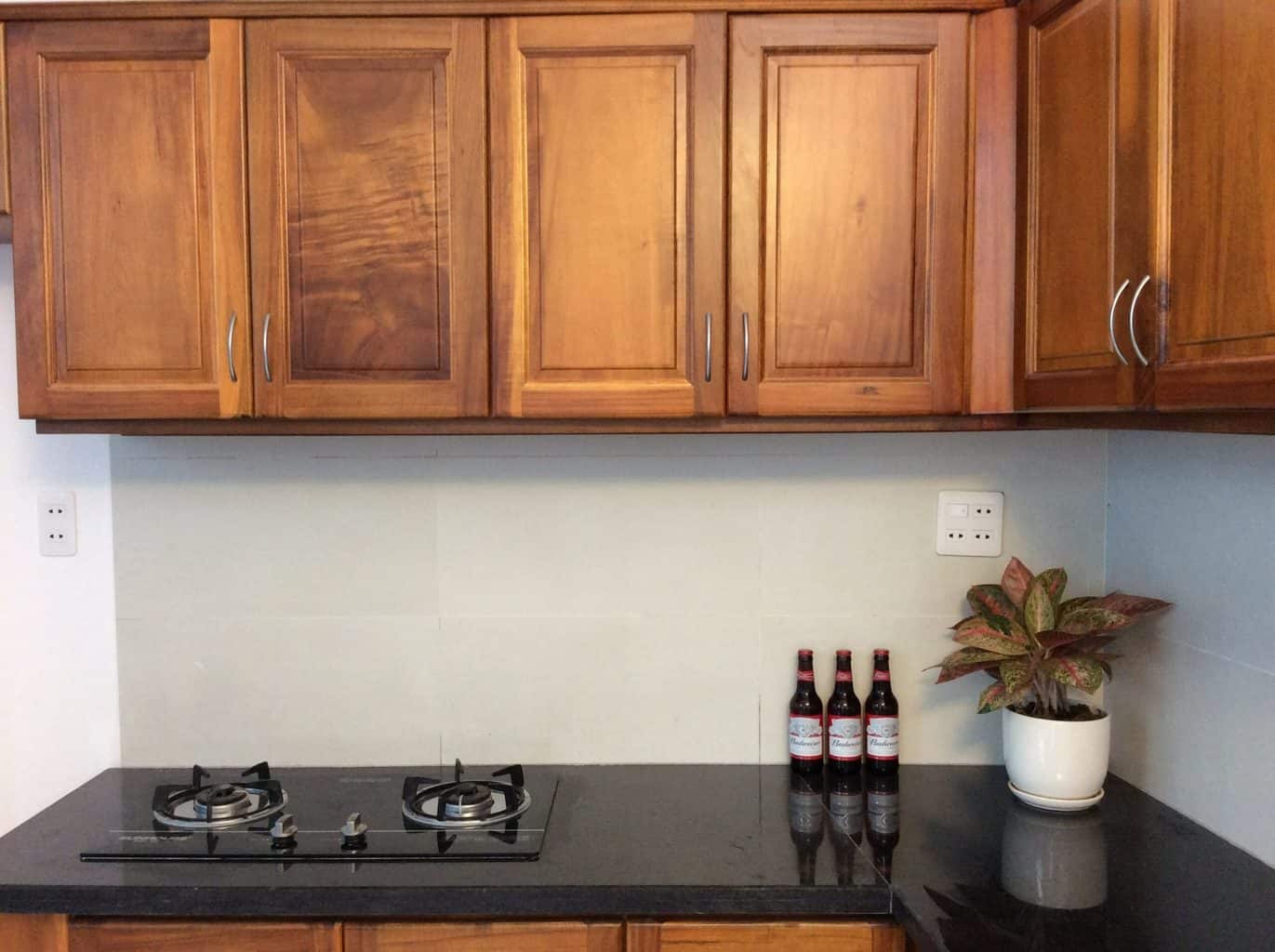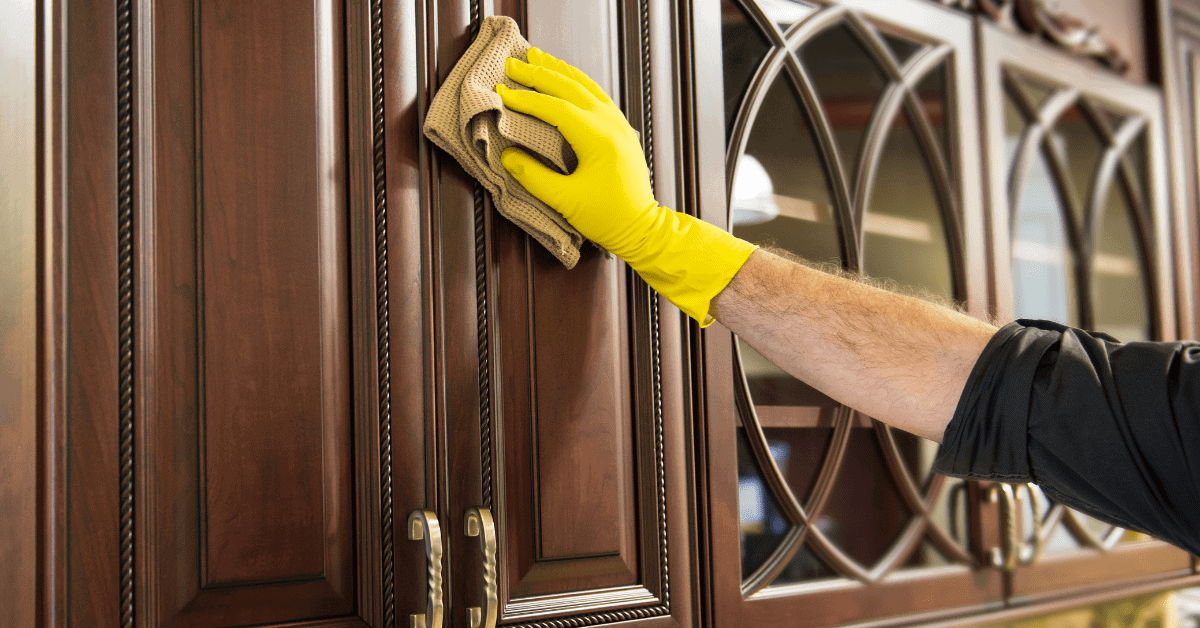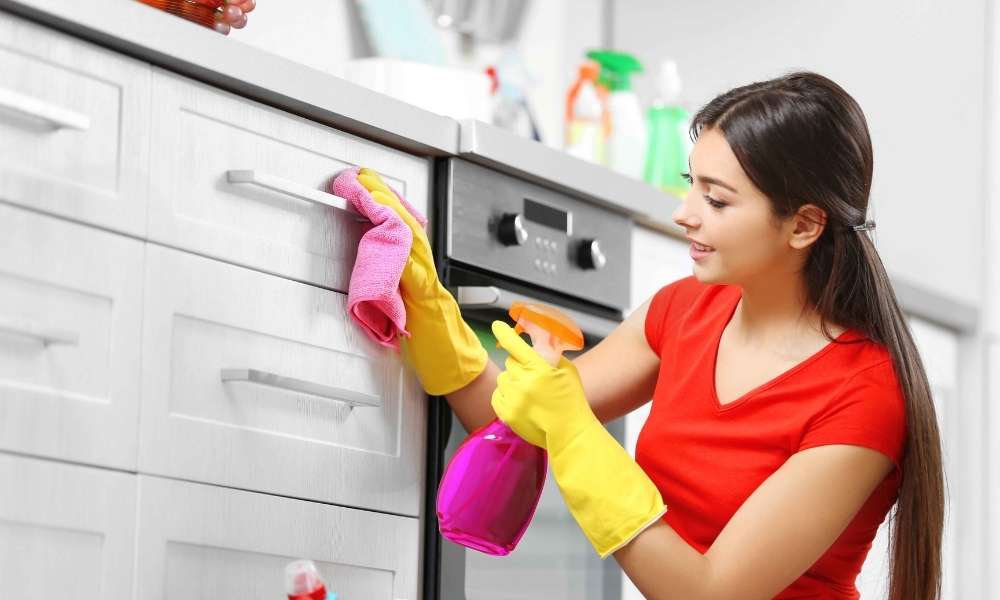Identifying the Cause of Stickiness

Sticky wood cabinets are a common problem that can be caused by a variety of things. It’s important to determine the source of the stickiness before you start cleaning. This will help you choose the right cleaning method and prevent further damage to your cabinets.
Types of Substances that Cause Stickiness, How to clean wood cabinets that are sticky
The stickiness you’re experiencing could be due to a variety of substances, each requiring a specific cleaning approach.
- Spills: Spills of sugary drinks, juices, or syrups can leave a sticky residue that can be difficult to remove. These spills often have a distinct odor and may be accompanied by discoloration.
- Grease: Cooking grease can also cause stickiness, especially if it has splattered onto the cabinets during cooking. Grease typically has a distinctive greasy feel and a noticeable odor.
- Sticky Residue from Cleaning Products: Some cleaning products, particularly those containing wax or silicone, can leave behind a sticky residue. This residue is often clear or slightly cloudy and may feel tacky to the touch.
Identifying the Source of Stickiness
The appearance, smell, and texture of the stickiness can help you determine its source.
- Appearance: The color of the sticky residue can be a good indicator of its source. For example, a clear or slightly cloudy residue is likely from a cleaning product, while a dark, sticky residue could be from a sugary spill.
- Smell: The odor of the sticky residue can also help you identify its source. For example, a greasy smell suggests that the stickiness is caused by grease, while a sweet smell indicates a sugary spill.
- Texture: The texture of the sticky residue can also provide clues about its source. A greasy residue will feel oily, while a sticky residue from a cleaning product will feel tacky.
Cleaning Methods for Sticky Wood Cabinets: How To Clean Wood Cabinets That Are Sticky

Now that you know what’s causing the stickiness, let’s get those cabinets clean! Here are some tried and true methods to tackle the sticky situation.
Cleaning Sticky Wood Cabinets with Mild Soap and Water
A simple solution for removing light stickiness is using mild soap and water. This method is gentle enough for most wood finishes.
- Gather your supplies: You’ll need a soft cloth, warm water, and mild dish soap.
- Mix the solution: In a bowl, combine a few drops of dish soap with warm water. Avoid using harsh detergents or abrasive cleaners, as they can damage the wood finish.
- Apply the solution: Dip the cloth into the soapy water and gently wipe down the sticky areas of the cabinets. Work in small sections, applying light pressure.
- Rinse and dry: Once you’ve cleaned the entire surface, rinse the cloth with clean water and wipe the cabinets again to remove any soap residue. Then, dry the cabinets thoroughly with a clean, dry cloth.
Cleaning Sticky Wood Cabinets with Baking Soda Paste
Baking soda is a natural abrasive that can effectively remove sticky residue.
- Create a paste: Combine baking soda with a small amount of water to form a thick paste.
- Apply the paste: Apply the baking soda paste to the sticky areas using a soft cloth or sponge.
- Scrub gently: Gently scrub the paste into the sticky areas using a circular motion. Avoid excessive scrubbing, as it can scratch the wood finish.
- Wipe clean: Once the sticky residue has been removed, wipe the paste away with a damp cloth. Then, dry the cabinets thoroughly with a clean, dry cloth.
Cleaning Sticky Wood Cabinets with a Wood Cleaner
For stubborn stickiness, a wood cleaner specifically designed for sticky surfaces can be the best option.
- Choose the right cleaner: Look for a wood cleaner that is formulated for removing sticky residue and is safe for your type of wood finish.
- Follow the instructions: Carefully read and follow the instructions on the cleaner’s label. Some cleaners may require specific application techniques or drying times.
- Apply the cleaner: Apply the cleaner to the sticky areas using a soft cloth or sponge. Avoid over-applying the cleaner, as it can damage the wood finish.
- Wipe clean: Once the cleaner has had time to work, wipe it away with a clean, damp cloth. Then, dry the cabinets thoroughly with a clean, dry cloth.
Additional Tips and Precautions

It’s always a good idea to be cautious when cleaning wood cabinets, especially if you’re dealing with a sticky mess. Taking a few extra steps can help prevent damage and ensure a successful cleaning process.
Testing Cleaning Solutions
Before applying any cleaning solution to your entire cabinet, it’s crucial to test it in an inconspicuous area. This will help you determine if the solution is compatible with the wood finish and if it will cause any discoloration or damage. To test, apply a small amount of the solution to a hidden spot, such as the underside of a shelf or the back of a drawer. Allow it to sit for a few minutes, then wipe it away with a clean cloth. If the finish looks unchanged and the stickiness is gone, you can safely use the solution on the rest of the cabinet.
Cleaning Methods for Different Finishes
The best cleaning method for your wood cabinets will depend on the type of finish they have. Here’s a table outlining the appropriate cleaning methods for various finishes:
| Finish Type | Cleaning Method |
|—|—|
| Lacquered | Mild soap and water solution |
| Varnished | Mineral spirits or denatured alcohol |
| Painted | Mild soap and water solution |
| Waxed | Furniture polish |
Precautions for Cleaning Wood Cabinets
It’s essential to exercise caution when cleaning wood cabinets to avoid damaging them. Here are some precautions to keep in mind:
- Avoid using abrasive cleaners, such as scouring powders or steel wool, as they can scratch the surface of the wood.
- Don’t scrub too hard, as this can also cause scratches. Use gentle circular motions instead.
- Limit the amount of time the wood is exposed to moisture, as this can cause warping or damage to the finish. Wipe away any excess moisture immediately.
How to clean wood cabinets that are sticky – Yo, sticky cabinets are a total buzzkill. You gotta get that grime off, man. Maybe try some baking soda and water, or a gentle cleaner. If you’re feeling fancy, a cream and navy blue bedroom like this one could be the inspiration for a fresh vibe.
But back to the cabinets, you gotta keep those clean, you know, so your room doesn’t feel like a sticky mess.
Yo, sticky wood cabinets? Ugh, that’s a vibe killer. First, try some baking soda paste, then wipe it down with a damp cloth. If you’re feeling fancy, you could paint them a fresh color, like that cool blue gray and coral bedroom I saw online.
But, if you wanna keep it classic, just give them a good polish and you’re good to go.
